Turtle Vine – Hanging Plant
₹355.00 Original price was: ₹355.00.₹49.00Current price is: ₹49.00.
22 in stock
Selling size: A bunch cuttings with roots
The Turtle Vine, scientifically known as Callisia repens, is a fast-growing, low-maintenance succulent that makes an excellent houseplant, especially for beginners.
Here’s a guide to Turtle Vines care:

Light
Turtle vines thrive in bright, indirect sunlight. They can tolerate some partial shade, but insufficient light can lead to leggy growth and loss of variegation in colored varieties. An east or north-facing window is usually ideal. Avoid direct, intense sunlight, especially during the hottest part of the day, as it can scorch the leaves. If you notice the leaves turning pale or the stems stretching, it’s a sign the plant needs more light.
Watering
Keep the soil consistently moist but not waterlogged. Water thoroughly when the top inch or two of the soil feels dry to the touch. Ensure your pot has drainage holes to prevent excess water from sitting at the bottom, which can lead to root rot. During the active growing season (spring and summer), you might need to water more frequently than in the fall and winter when the plant’s growth slows down. Yellowing leaves can be a sign of overwatering.
Soil
Turtle vines prefer well-draining soil that retains some moisture. A regular potting mix amended with perlite or sand to improve drainage is suitable. You can also use a succulent or cactus potting mix.
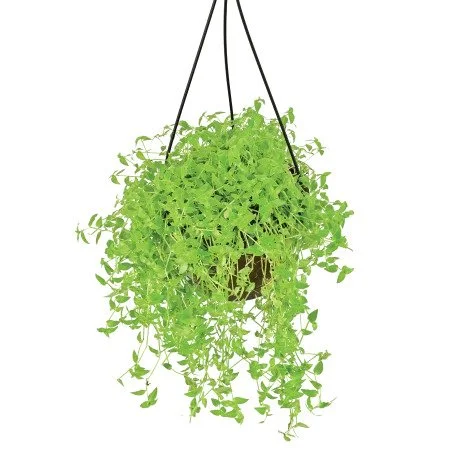
Temperature and Humidity
Average household temperatures between 65°F to 80°F (18°C to 27°C) are ideal for turtle vines. They can tolerate slightly cooler temperatures but should be protected from frost. They appreciate moderate to high humidity. If the air in your home is dry, especially during winter, you can increase humidity by misting the plant occasionally, using a pebble tray with water, or placing a humidifier nearby.
Fertilizer
Turtle vines are not heavy feeders. You can fertilize them every 4-6 weeks during the spring and summer with a balanced, water-soluble houseplant fertilizer diluted to half strength. Reduce or stop fertilizing during the fall and winter months.
Pruning
Pruning helps to keep your turtle vine bushy and encourages more vibrant growth, especially in variegated varieties. You can trim any leggy or overgrown stems using clean pruning shears. Pruning is best done during the growing season.
Propagation
Turtle vines are very easy to propagate from stem cuttings.
- Take a healthy stem cutting that is 3-4 inches long, ensuring it has at least a few sets of leaves.
- Remove the leaves from the bottom node.
- You can dip the cut end in rooting hormone (optional).
- Plant the cutting in well-draining soil or place it in water.
- If propagating in water, change the water weekly. Once roots develop, usually within a few weeks, you can plant the cutting in soil.

Turtle Vine - Keep the cuttings in a warm place with bright, indirect light and keep the soil consistently moist until new growth appears.
Common Problems
- Yellowing leaves: Often due to overwatering or insufficient light.
- Brown, crispy leaves: Can be a sign of underwatering or too much direct sunlight.
- Leggy growth: Usually indicates insufficient light.
- Leaf drop: Can occur if the soil dries out completely for extended periods.
- Pests: Generally pest-resistant, but watch out for spider mites, especially in dry conditions. You can usually wipe them away with a damp cloth or spray with insecticidal soap if the infestation is heavy.
With the right care, your turtle vine will thrive and add a lovely trailing touch to your indoor space!
Only logged in customers who have purchased this product may leave a review.
You may also like…
-
Callisia Repens – Hanging Plant
₹280.00Original price was: ₹280.00.₹49.00Current price is: ₹49.00.Add to cartSelling size: A bunch cuttings with roots Callisia repens, also known as creeping inch plant or turtle vine, is a relatively easy-to-care-for trailing succulent. Here’s a guide to keeping Callisia Repens happy: Light: Bright, indirect light is ideal. This will help maintain vibrant foliage colors, especially in variegated varieties like ‘Pink Bubbles’. It …
-
Tradescantia Callisia Pink Passion, Pink Lady
₹250.00Original price was: ₹250.00.₹99.00Current price is: ₹99.00.Rated 5.00 out of 5Read moreSelling sizes: Single Plant | 2.5″ Pot Included The Tradescantia Callisia Pink Passion, Pink Lady are two closely related cultivars of Callisia repens, often referred to as Turtle Vine or Creeping Inchplant. They are loved for their small, attractive, variegated leaves and trailing growth habit, making them popular choices for indoor hanging baskets, shelves, and …
Related products
-
Philodendron Xanadu
₹450.00Original price was: ₹450.00.₹175.00Current price is: ₹175.00.Rated 5.00 out of 5Add to cartSelling size:Well rooted plant | 2.5″ Pot Included Winter Orchid Requirements: Growing Orchids During Winter It will form a dense clump of beautifully lobed leaves and will tend to grow wider than taller. The Xanadu philodendron houseplant can grow to 2 to 4 feet tall (0.6 to 1.2 m.) and up to 4-6 feet (1.2 …
-
Philodendron ‘Prince of Orange’
₹219.00 – ₹620.00Rated 5.00 out of 5Select options This product has multiple variants. The options may be chosen on the product pageThe Philodendron ‘Prince of Orange’ gets its name from its uniquely hued leaves, which change color over time.They have light-green foliage with the new leaves opening up in a bright orange color.Its foliage tends to get more coarse with age and its leaves more prominently ribbed. The stiff, dark red leaf stems hold the large …
-
Golden Pothos
₹355.00Original price was: ₹355.00.₹99.00Current price is: ₹99.00.Add to cartSelling size : Well rooted plant | 2.5″ pot included The Pothos is the king of easy growing. With its lush heart-shaped foliage this trailing vine will impress you with its ability to drape beautifully over a shelf or hanging basket and liven up any room. Although the Pothos enjoys plenty of indirect sunlight, they …
-
Scindapsus Pictus Exotica
₹380.00Original price was: ₹380.00.₹49.00Current price is: ₹49.00.Add to cartSelling size: Single Plant | 2.5″ Pot Included The Scindapsus Pictus Exotica, also known as the silver pothos, is a houseplant with large, dark green leaves that have silver spots and mottling. Here’s a guide to caring for your Scindapsus pictus Exotica plant: Light: Prefers bright, indirect light. An east or west-facing window that’s about …
-
Dischidia nummularia (Pebble Beach/ Button Orchid)
₹655.00Original price was: ₹655.00.₹375.00Current price is: ₹375.00.Rated 5.00 out of 5Add to cartPlant Size: Single plant | 2.5″ Pot Included | Free Shipping Dischidia is an epiphytic small growing tropical succulent plant, related to a Hoya, with trailing stems. These plants grows on supports such as tree trunks or branches. Their stems may produce roots along the nodes to absorb nutrients and water and provide additional support …
-
Dischidia Ruscifolia (Million Hearts)
₹695.00Original price was: ₹695.00.₹375.00Current price is: ₹375.00.Add to cartPlant Size: Single plant | 2.5″ Pot Included | Free Shipping Dischidia Ruscifolia also known as Million Hearts, has numerous small, heart-shaped green leaves that line both sides of thin trailing stems. Its flowers are small and grow between a leaf and the stem.If grown under intense light, the plant’s leaves will develop a red tinge. …
-
Pilea Repens, Black Panamiga
₹280.00Original price was: ₹280.00.₹129.00Current price is: ₹129.00.Rated 5.00 out of 5Add to cartSize: Single Plant | 2.5″ Pot Included Caring for a Pilea Ripens (also known as Black Panamiga) involves understanding its specific needs to ensure it thrives. Here’s a breakdown of Pilea Repens, Black Panamiga key care aspects: Key Care Points: Light: Pilea repens prefers bright, indirect sunlight. Direct sunlight can scorch its leaves. Rotating the …
- Today's Offer371371 products
- Shop All13461346 products
- Featured Collections13161316 products
- AIR PLANTS77 products
- BEGINNER FRIENDLY654654 products
- BONSAI3838 products
- CREEPERS305305 products
- FLOWERING PLANTS347347 products
- FOLIAGE PLANTS925925 products
- FRUIT PLANTS2020 products
- GIFTING PLANTS235235 products
- HANGING PLANTS430430 products
- MEDICINAL PLANTS99 products
- PET FRIENDLY PLANTS427427 products
- RARE PLANTS687687 products
- STRINGS SUCCULENTS3939 products
- SUCCULENTS146146 products
- TERRARIUM PLANTS530530 products
- TREE7878 products
- VARIEGATED PLANTS243243 products
- VEGITABLES55 products
- WATER PLANTS2929 products
- Plants By Size12931293 products
- Plants By Price905905 products
- Under ₹99187187 products
- Under ₹199241241 products
- Under ₹299470470 products
- Under ₹399554554 products
- Under ₹599692692 products
- Under ₹999883883 products
- Plants By Variety12221222 products
- Adenium3333 products
- Aglaonema3333 products
- Alocasia & Colocasia5656 products
- Altheranthera11 product
- Anthurium9393 products
- Arelia55 products
- Baby Sunrose22 products
- Bamboo33 products
- Banana Variegated55 products
- Begonia55 products
- Bougainvillea1717 products
- Bromeliads22 products
- Cactus1616 products
- Caladium2121 products
- Calatheas & Marantas4646 products
- Carnivorous1212 products
- Costus55 products
- Croten44 products
- Dischidia88 products
- Dracenia99 products
- Drimiopsis33 products
- English Ivy55 products
- Episcia2626 products
- Ferns8787 products
- Euphorbia1111 products
- Fiddle leaf fig11 product
- Fittonia66 products
- Grass33 products
- Haworthia33 products
- Heliconias44 products
- Homalomena1717 products
- Hoya1414 products
- Ixora22 products
- Jade22 products
- Labisia1414 products
- Lipstick plants1010 products
- Monstera5353 products
- Orchids4444 products
- Coelogyne Rochussenii Fragrance Orchid11 product
- Dendrobium Orchid1010 products
- Mokara Orchids1717 products
- Mokara Orchid (Matured Plant)1414 products
- Mokara Orchids (Special Varietys)33 products
- Phalaenopsis, Moth orchid1616 products
- Oxalis Triangularis/ Butterfly Plant55 products
- Palm88 products
- Peace Lily77 products
- Pedilanthus88 products
- Pelliona Repens33 products
- Pepperomia1515 products
- Petrea44 products
- Philodendron159159 products
- Pilea77 products
- Pine22 products
- Piper2121 products
- Pothos & Scindapsus3232 products
- Rubber plants77 products
- Schismatoglottis99 products
- Snake plants77 products
- Syngonium4646 products
- Spider plants1313 products
- Tapioca33 products
- Thunbergia88 products
- Torenia77 products
- Tradescantia Varietys1616 products
- Zz Plants55 products
- Other plants184184 products
- Plants By Location607607 products
- Balcony plants534534 products
- Bedroom plants112112 products
- Kitchen plants9292 products
- Livingroom plants132132 products
- Office plants119119 products
- Outdoor plants358358 products
- Restroom plants7575 products
- Best Sellers6767 products
- Combo Offers1616 products
- Garden Accessories4949 products
- Bulbs And Tubers77 products
- Fertilizers11 product
- Insecticide11 product
- Planters77 products
- Pot Hanger88 products
- Potting Mix55 products
- Seeds2222 products

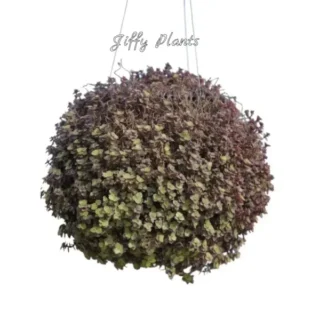

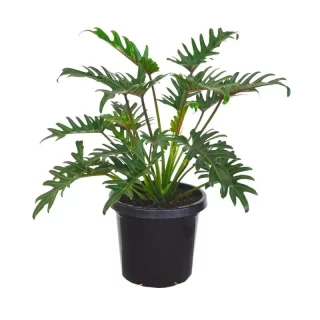




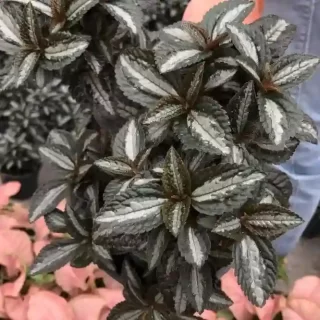

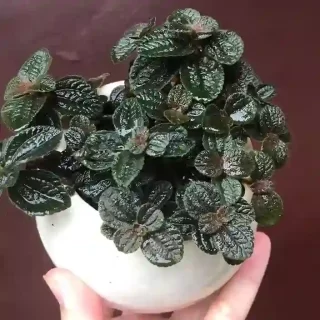
 If you need any assistance, I'm always here. Have you found what you were looking for?
If you need any assistance, I'm always here. Have you found what you were looking for?
Reviews
There are no reviews yet.